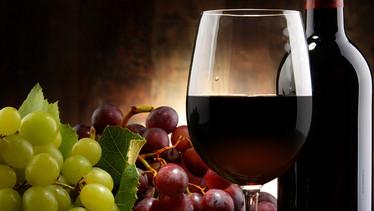Wine Analysis

Learn what A-TEEM Spectroscopy can do for Wine, Spirits, Beer and Tea analysis.
Wine analysis is the characterization of the various chemical components of wine and grapes.
Contemporary “wet” methods of wine analysis are costly, slow, and difficult to execute. This makes it challenging for wineries with multiple vineyards to QA/QC its grape development and wine product in widespread locations.
HORIBA’s Aqualog uses a fluorescence spectroscopy technique that simultaneously collects absorbance, transmission, and fluorescence Excitation Emission Matrixes acquisition, Better known as, “A-TEEM” it characterizes a sample’s content in seconds. It can collect the entire composition of all the colored and phenolic compounds in less than a minute. And as a small unit, can be stationed throughout a winery’s vineyards.
Wineries typically send out samples of the grapes to analytical labs to be tested for wine analysis on costly, hard-to-maintain equipment. The traditional devices are slow, and since so many samples must be run to monitor multiple harvests, it becomes an expensive and time-consuming process.
The conventional methods most labs use for wine analysis are Gas Chromatography-Mass Spectrometry, Liquid Chromatography-Mass Spectrometry, and Fourier Transform Infrared Spectroscopy. The equipment is costly, difficult to calibrate, and quite expensive. These are also slow and costly to process results.
In fact, it takes between 35 and 90 minutes to analyze a single sample in an independent laboratory using conventional methods to fingerprint the grapes. And it can cost hundreds of dollars per sample.
A typical small winery would like to test each wine field location many times during the wine-making season.
Maintaining calibration and transferring calibrations to field locations and places where analysis takes place is crucial.
Wine analysis entails many quality characteristics that interest winemakers that relate to the color of the wine and the phenolic content – compounds that affect the wine’s taste, color, and mouthfeel.
All of these characteristics, including the pH and sugar content, are routinely evaluated by instruments for each batch of grapes. The intention is to have a survey that's representative of the particular vineyard and different locations in the vineyard.
Large wine companies have many different vineyards from which they are collecting grapes. Thus, it’s clearly expensive for most small vineyards, let alone very large vineyards and wine companies to have to manage a comprehensive characterization of all the key parameters.
A-TEEM is HORIBA’S proprietary fluorescence spectroscopy technology that simultaneously acquires, Absorbance, Transmission, and fluorescence Excitation and Emission Matrix measurements, correcting for the inner filter effect on the fly.
What this means is that it can produce a molecular fingerprint of the phenolic content and other key measurement components in wine analysis.
It replaces HPLC in wine analysis with a fast, inexpensive, accurate, fluorescence spectrometer
The A-TEEM-capable Aqualog, can run a sample in less than a minute, and collect the entire composition of all the colored and phenolic compounds. And the analysis can be fully automated in terms of the phenolic identity and concentration.
Several world-renowned wineries have adopted this technology, and since it features portability and low sample costs allows it to be deployed in multiple locations.
Of the hundreds of different compounds that have been identified in grapes, it is the phenolic content of ripening grape berries that fundamentally determines the quality of a wine. The different classes of phenolics (anthocyanins, tannins, flavonols, catechins) affect the color, the mouthfeel, flavor and aroma to various extent, and most of these compounds fluoresce. The individual compounds comprising these classes of phenolics together give the wines their unique character. The A-TEEM data collected by Aqualog is used upstream and downstream to evaluate lot-to-lot, regional, and varietal characteristics in wine and grape juice.
Classical Least Squared (CLS) analysis of the wines and spirits based upon a library of 9 phenolic compounds for illustrative purposes yields their relative contribution to the total phenolic fingerprint normalized to 100%. Significant differences between wines and spirits are reflected visibly in their phenolic compound fingerprints, acquired with Aqualog.
A Simple, Fast, “Column Free” Molecular Fingerprinting Technology
У вас есть вопросы или пожелания? Используйте эту форму, чтобы связаться с нашими специалистами.
